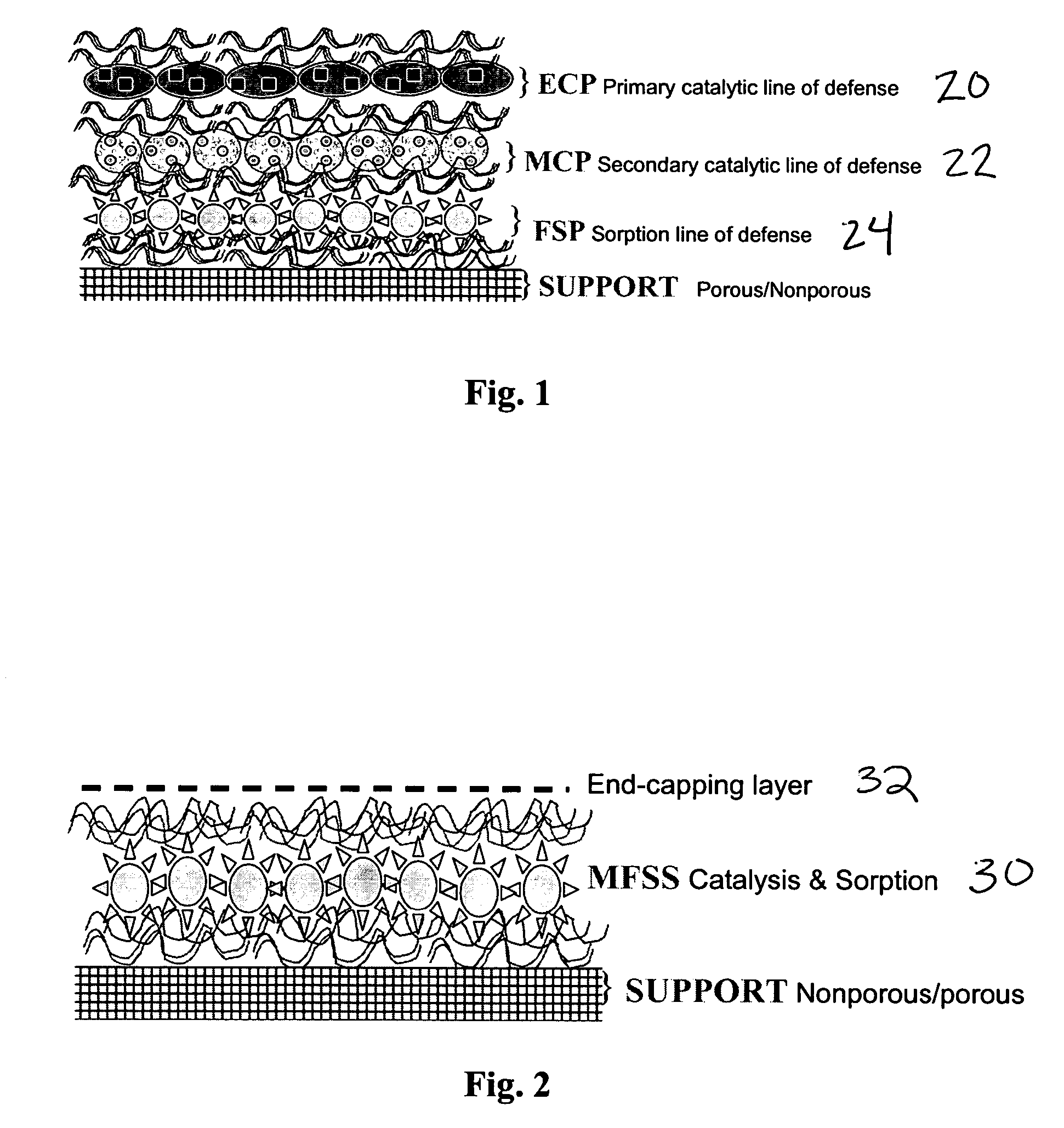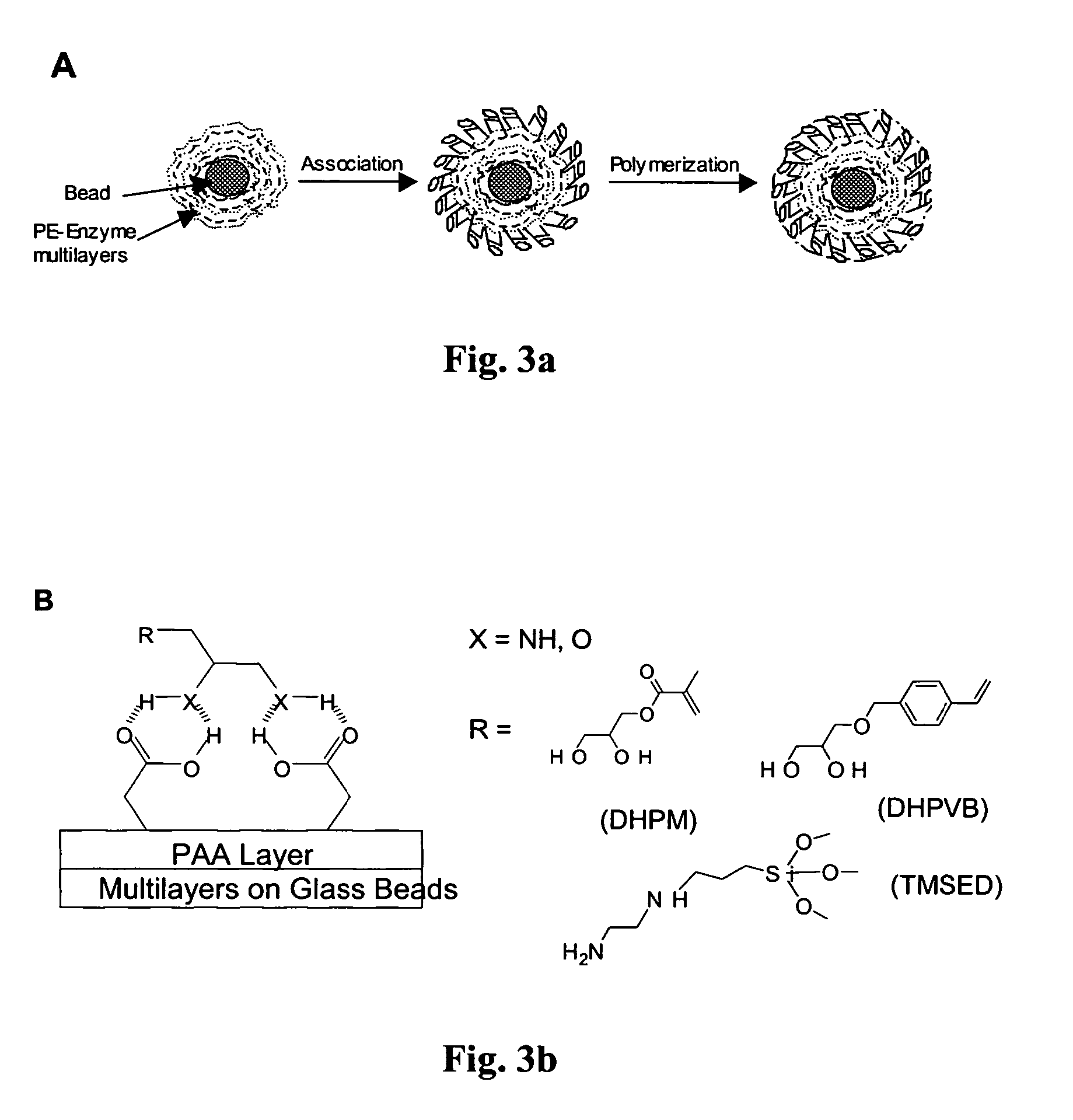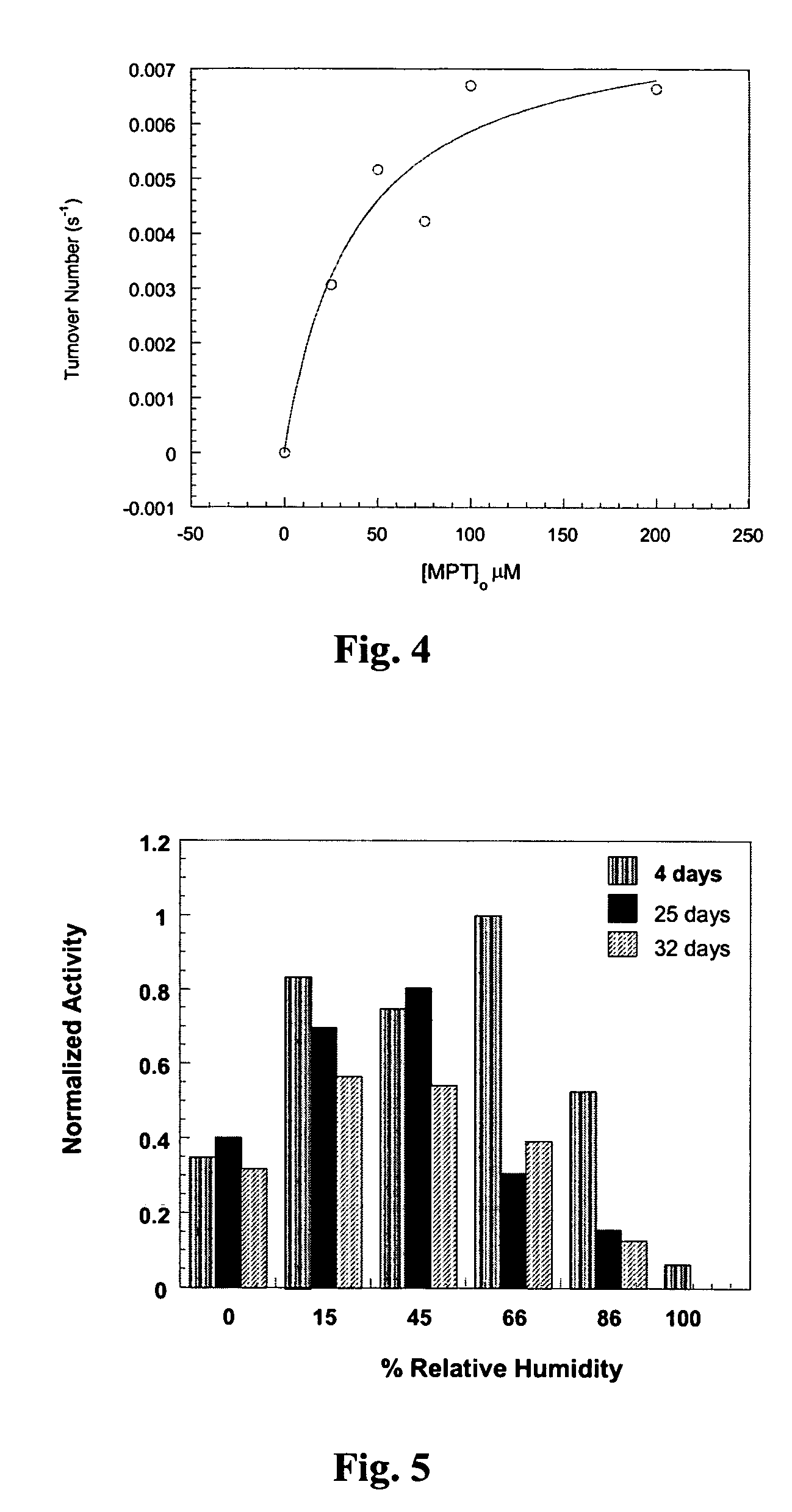Catalytic surfaces for active protection from toxins
a technology of catalytic surfaces and toxins, applied in the field of catalytic surfaces, can solve the problems of only one useful life cycle, bulky materials used in barrier protection, and more dangerous, and achieve the effect of superior catalytic activity of enzymes, simple and effective multilayer formation, and efficient passivation
- Summary
- Abstract
- Description
- Claims
- Application Information
AI Technical Summary
Benefits of technology
Problems solved by technology
Method used
Image
Examples
example 1
Multilayer Formation and Assembly Stabilization
[0034]As illustrated in FIGS. 3a and 3b, polyelectrolyte multilayers were formed on glass beads (30–50μ) by sequential immersion in their respective polyelectrolyte solution. Polyelectrolytes were dissolved in water and their pH was adjusted by adding dilute solution of hydrochloric acid or sodium hydroxide. After treatment with each polyelectrolyte solution (1–5 mM) (preferably 10 minutes), the substrates were briefly washed with deionized water, and the supernatant was decanted to remove the extraneous polyelectrolyte adhered to the surface. Both glass beads and gold resonators were first modified by putting down an initial branched polyethyleneimine (BPEI) layer followed by deposition of three alternating layers of PSS-BPEI to make a BPEI-(PSS-BPEI)3- assembly to serve as precursor layers. Gold resonator were used for quantitative determination of mass of the deposited layers and the enzymes. The gold resonators are made from quartz ...
example 2
Deposition of OPH on Woven Glass Cloths
[0036]Polyelectrolyte multilayers were formed on glass cloth and cotton cloth in a similar manner as for glass beads. The glass (or silica) cloth used was from Hexcel Schwebel—STYLE 106 with a fabric weight of 25 g / m2, plain weave style, warp count 56, fill count 56, 0.04 mm fabric thickness, and 45 lbf / in breaking strength; however, any glass cloth can be used. The sequence of multilayer deposition was silica-BPEI / water-OPH / BTP-BPEI / BTP. The preferred deposition method consisted of dipping the cloth in a polyelectrolyte solution. The RCA Procedure was used for cleaning [MeOH:HCl, 1:1, (2 hours); water rinse; 95% H2SO4 (30 min), water rinse]. The following procedure was used for deposition: 3 mM BPEI / H2O (8.6) 10 min.; wash with H2O 1 min, OPH-10 mM BTP (8.6) 10 min.; wash with BTP (8.6) 1 min; BPEI / BTP (8.6) 10 min.; BTP 1 min; PSS (6.6) 10 min.; repeat the sequence for more layers. Excess water was removed by snapping the cloth followed by dr...
example 3
Deposition of OPH on Cotton Cloths
[0037]For cotton cloth, a commercial cotton fabric was used. The sequence of multilayer deposition was silica-BPEI / water-OPH / BTP-BPEI / BTP, and an identical method for the multilayer deposition was used. The catalytic activity was measured in the same way as described for glass cloth. While, cotton cloth also retained its activity after reusing it for three weeks (while storing the cloth in refrigerator for the week-end), it showed a three times higher activity than observed for glass cloth.
PUM
| Property | Measurement | Unit |
|---|---|---|
| thickness | aaaaa | aaaaa |
| thickness | aaaaa | aaaaa |
| flow rate | aaaaa | aaaaa |
Abstract
Description
Claims
Application Information
 Login to View More
Login to View More - R&D
- Intellectual Property
- Life Sciences
- Materials
- Tech Scout
- Unparalleled Data Quality
- Higher Quality Content
- 60% Fewer Hallucinations
Browse by: Latest US Patents, China's latest patents, Technical Efficacy Thesaurus, Application Domain, Technology Topic, Popular Technical Reports.
© 2025 PatSnap. All rights reserved.Legal|Privacy policy|Modern Slavery Act Transparency Statement|Sitemap|About US| Contact US: help@patsnap.com



